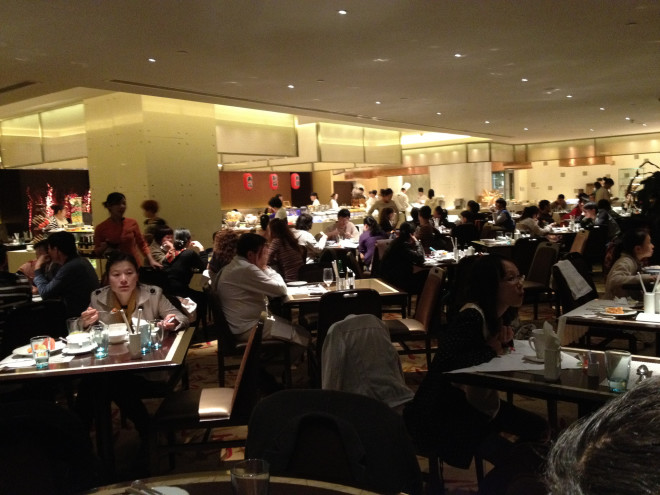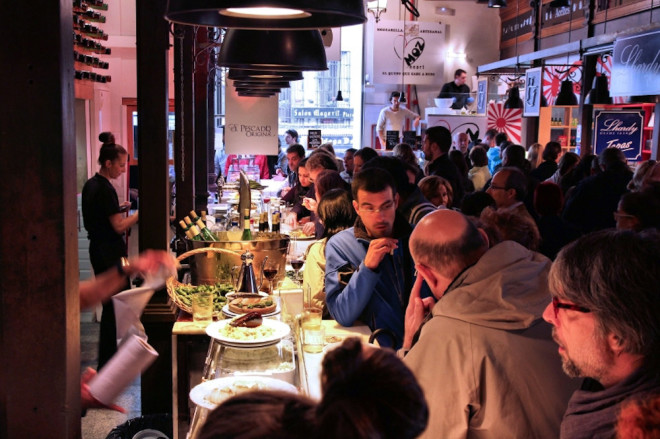How To Control The Noise Levels In Your Restaurant

Control noise levels so customers are comfortable in your restaurant.
Atmosphere is of the utmost importance in your restaurant. That includes the lighting, artwork, spacing, music, and of course, the noise level.
In this article, we’re going to talk about how to control the noise levels in your restaurant so your customers have the best possible experience.
First, let’s look at some of the problems excessive noise causes.
Noise Issues
The World Health Organization defines noise as a serious health hazard.
Before we look at how noise affects your customers, let’s look at how it affects your employees. Many experts see excess noise as an ergonomics-related program. It can damage hearing, spike blood pressure, and decrease productivity all while increasing stress and fatigue.
Your employees are at particular risk for noise-related problems because they are exposed to it for long hours. If the noise levels are 85 dB or more, and your employees are subject to that noise for eight hours, they can develop acoustic-related issues.
A typical restaurant operates at 80 dB, but some restaurants are known to reach 110 dB – the levels of jackhammer noise!
To keep your employees content and productive, you should look at your noise levels.
Now, let’s consider the noise issues for your customers. According to Zagat, the second most common complaint from restaurant customers was noise.
Noise ranks as one of the most irritating problems encountered while dining out. (tweet this) It follows closely on the heels of bad service and comes in before bad food.
The ideal sound level for normal conversation is between 55 and 65 dB. If you factor in the normal restaurant noise, your restaurant moves to about 70 dB. At this point, your customers have to raise their voices to be heard. At 75 dB, conversation is difficult and at 85 dB, damaging.
While this all gives cause for “quieter” restaurants, many owners are purposefully creating a noisy restaurant. They mistakenly believe their customers are having a better time if they are shouting to be heard.
One US newspaper is doing something about the problem of noisy restaurants. The San Francisco Chronicle, when rating restaurants, is giving them a decibel rating so diners know up front whether they are going to be able to carry on a conversation.

Busy restaurants are appealing if customers can still talk to each other.
Control the Noise Levels
Let’s look at some ways to fix the noise levels in your restaurant so you have happier customers.
Many modern restaurants are opting for an industrial décor – this usually means wood or tile floors, metal fixtures and a cavern-like atmosphere. In this case , you might find it useful to install carpeting in your high-traffic areas. This will reduce the noise outside your restrooms and in your reception area.
You could also use acoustic fabric-covered wall panels. If this sounds unappealing, get creative. Use panels as part of your décor. Hire a local artist to paint on them in a way that is appealing to your overall theme and concept.
Opposites work well together. If you’ve got hard flooring, and hard surfaces such marble and granite in other areas of your restaurant, use a soft ceiling. By installing sound-absorbing ceiling tiles, you’ll muffle the sound coming from the floor areas.
Again, get creative. Use ceiling finishes or drape cloth in your ceiling area.
Windows are aesthetically appealing and let in natural light, but they come with acoustic issues. Glass reflects sound.
The solution? Use curtains to offset the bounce of the sound. You can soften the noise level with textured wall surfaces or coverings. Even adding some area rugs and tablecloths can help reduce the noise.
One other option for windows includes retrofitting secondary acoustic windows to block out traffic coming from cars, airplanes and trains.
When it comes to the machinery of your business, we have a few tips:
- Place ice and soda machines away from the main dining areas. You can even purchase one with a roof-mounted condenser to soften the sound.
- Place your side-stations away from the dining area as these are often places of loud noise.
- Maintain your heating and air conditioning equipment so they work at their quietest.
- Consider sound absorbers to lessen the sound of noisy machinery.
We have a customer who helped solve his noise problem by putting rubber caps on the chair legs. Not only does it keep the chair from scratching the floor, but it cuts down on noise.
Your kitchen may also generate a lot of noise. Make sure your kitchen doors are soundproofed. You can also use partitions and barriers to break up pathways of loud sound. Consider partitions around your side-stations, too.
Watch the background music. It should be just that, in the background. Today’s diners want to enjoy the company of others, and if your music is too loud, they can’t.
When it comes to your music, you want to make sure your music matches your target customer. (tweet this) The music you play in the background needs to support your restaurant’s concept. It’s an integral part of your atmosphere.
While looking at your background music, here are some tips for you to consider:
- By increasing the temp (not the volume), you can increase table turns. Perhaps this is more important to you during the busy lunch-rush and not as much during the evening hours.
- Slower tempo music can increase your bar orders. Slower tempo music creates a more relaxing atmosphere that encourages bar customers to stick around and order more.
- Do an Internet search for best background music. The options are endless, and you can find just the right music to play for your customers.
To Conclude
Your restaurant’s atmosphere affects your profitability. That is especially true when it comes to your restaurant’s sounds. Your customers define their experience by how comfortable they felt in your restaurant.
If the noise levels are uncomfortable, your customers won’t enjoy their experience. In turn, they won’t come back to your restaurant or recommend it to others. If your food is great, but diners can’t talk to each other, they’ve lost the intimate comradery that comes with eating out.
If you haven’t thought about your noise levels and how that affects your customers, it’s time to take a “listen.” Ask your customers what they think. Are they comfortable with the noise levels or would they prefer something different?
Have you found the perfect noise levels for your restaurant? Or, have you had customers complain? How have you solved the problem to create the perfect atmosphere? Share your comments below – we’d love to hear them.
Images: EpicFireworks via VisualHunt.com / CC BY and jpalinsad360 via Visual hunt / CC BY-SA

I like what you said about installing carpets to help control noise. My boss has been telling me about how he wants to make sure that our building can remain at a tolerable volume in the coming weeks. I’ll share this information with him so that he can look into his options for professionals who can help him with this.